
After a refreshingly brief teaser campaign, Triumph have just thrown the wraps off their latest triple-cylinder roadster: the Triumph Trident 660. Cheaper than a Street Triple 765, but still promising decent performance, it’s a noteworthy entry into the middleweight roadster segment.
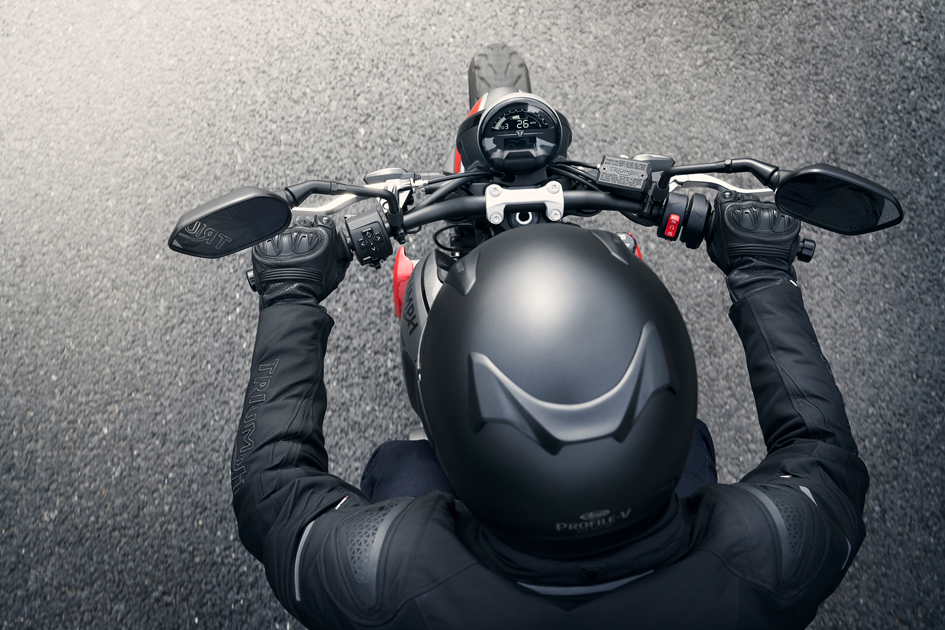
Early teases of the Trident had us convinced it was a revamped and de-tuned version of the older Street Triple 675—but it’s actually an all-new bike. We’re sure the motor shares parts with other triples in Triumph’s range, but it has 67 new components of its own, plus a special engine tune. It makes 80 hp and 64 Nm, which is enough to have fun with, and competitive in this class.
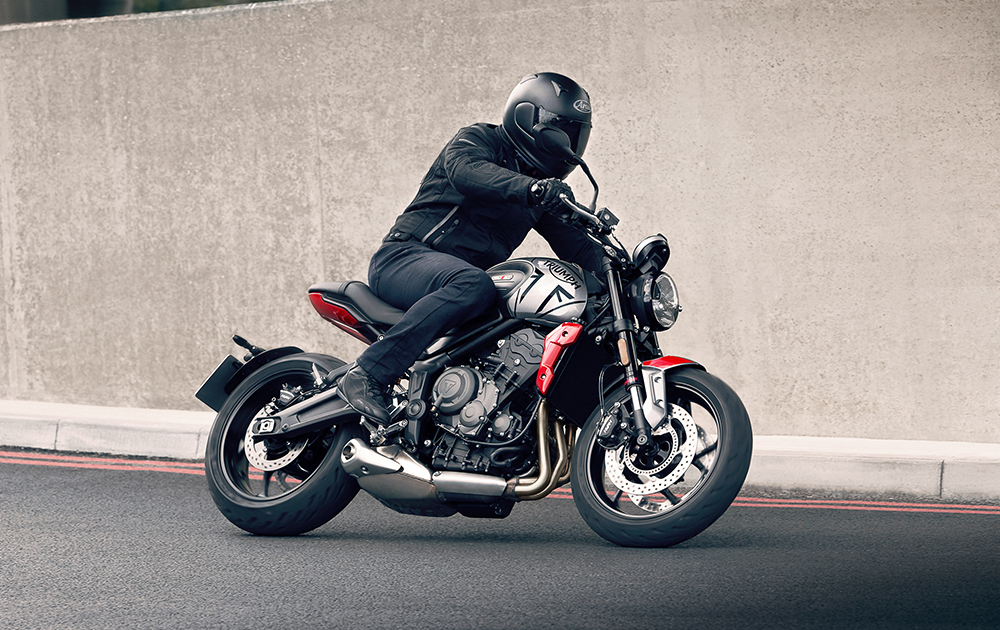
Triumph have tuned the Trident for all-day usability. Power peaks at 10,250 rpm and torque at 6,250 rpm, but 90% of the motor’s total torque is available across most of the rev range. We obviously haven’t ridden the Trident yet, but we’re expecting the same linear delivery and playful nature of the Street Triple, but without its revvy-ness.
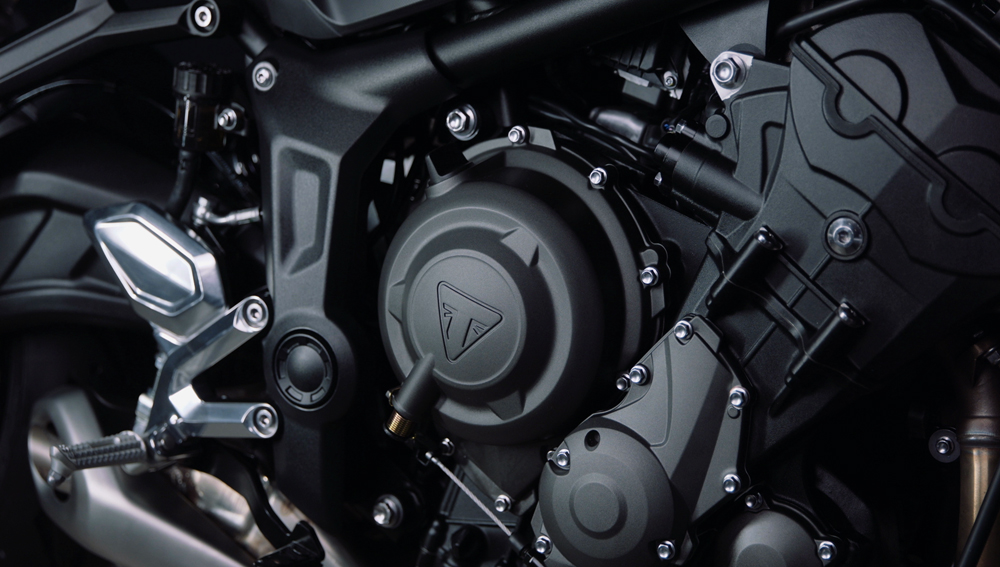
The Trident comes with a six-speed gearbox and a slip and assist clutch, with extra attention paid to the clutch lever to keep it light for urban use. Triumph offer a quick-shifter too, but only as an optional accessory. Rider aids are basic: two rider modes (‘Rain’ and ‘Road’), ABS and switchable traction control.
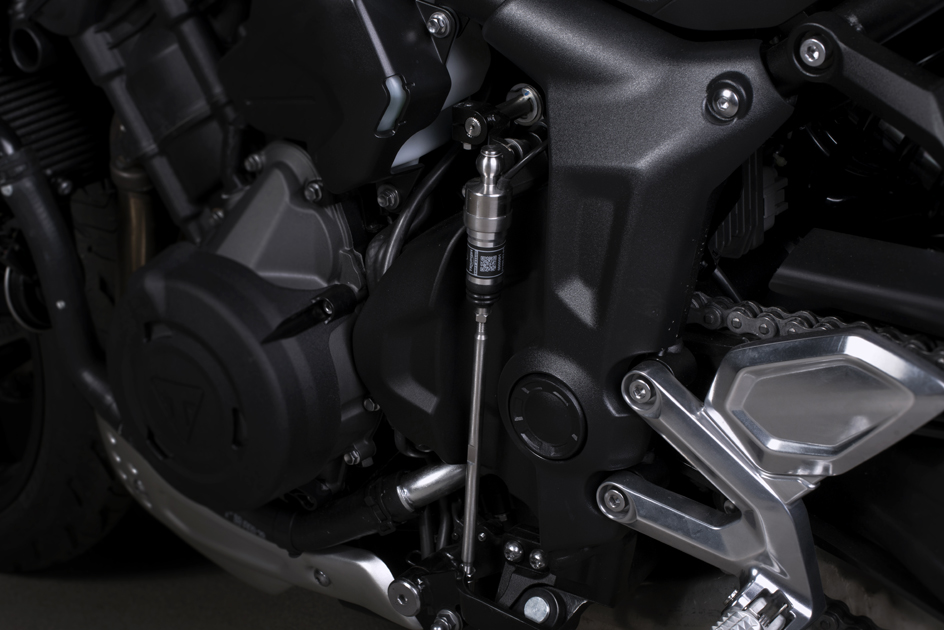
Triumph designed the Trident’s chassis with a neutral feel to suit most riders. The frame’s a tubular steel affair, with a total wet weight of 189 kilos. The bike’s compact and slim, a low seat height (805 mm), rear-set foot controls, and tapered bars that look to have plenty of leverage. We’re fans of how both the Street Triple and Speed Triple handle, so we’re expecting a nimble machine that should be bags of fun to throw around.
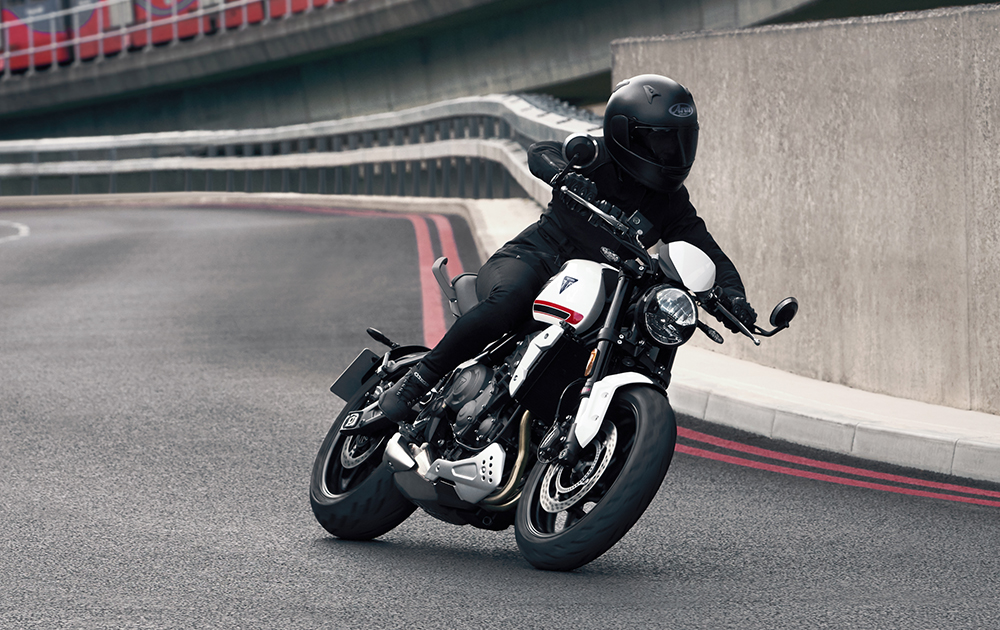
Chassis components include Showa suspension with rear preload adjustability, Nissin brakes with twin 310 mm front discs, and 17” alloy wheels. (There’s also a tyre pressure monitoring system available as an extra, if you want it.)
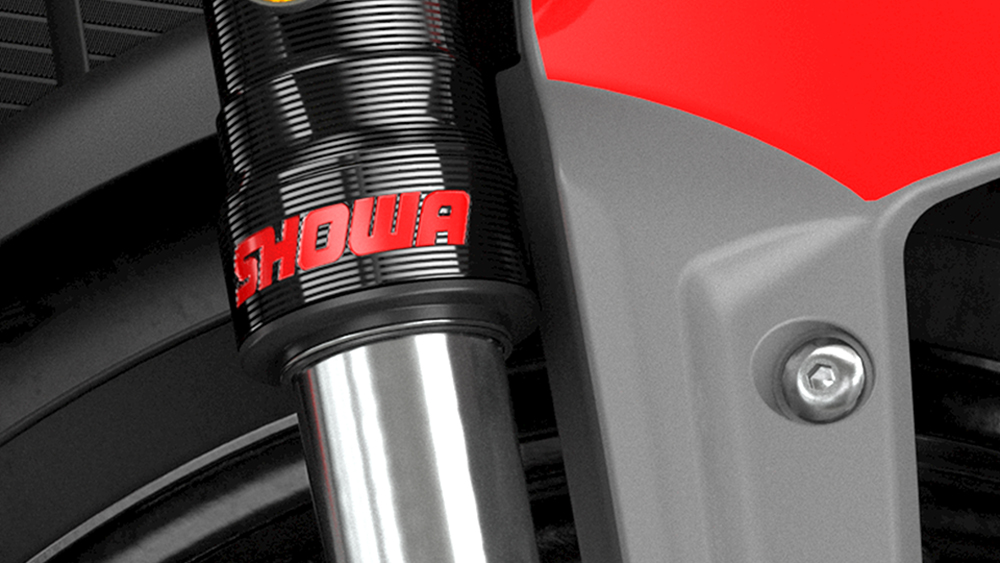
The lack of suspension adjustability is to be expected at this price point, but there are a few premium parts that add value. All the lighting is LED for starters, and there’s a round TFT dash that adds a touch of elegance, too. It also include’s Triumph’s ‘My Triumph’ smartphone connectivity system, with handy features like turn-by-turn navigation, call screening, media control and more.
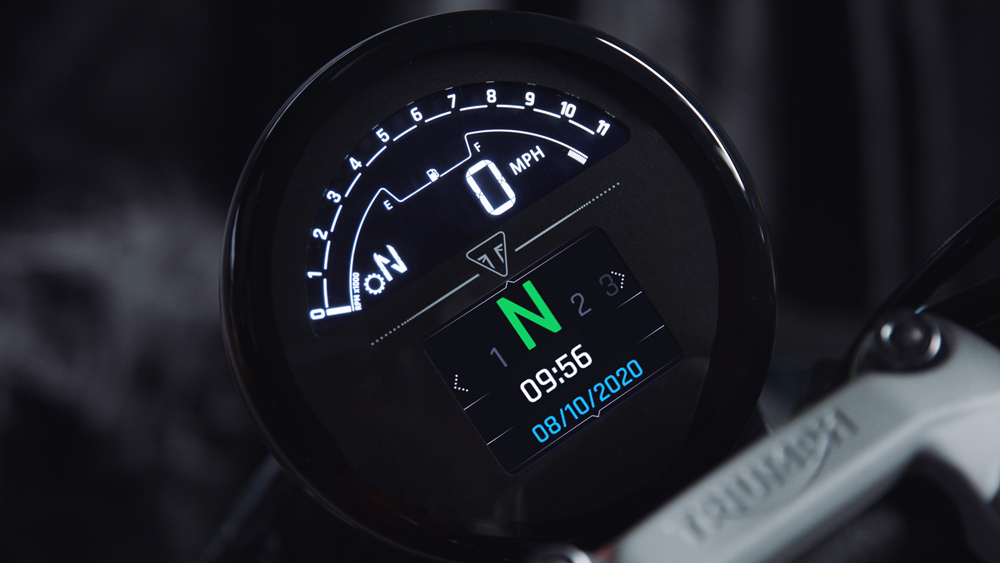
Optional tech accessories include heated grips and an under-seat USB charger, the latter of which should really be included as standard.
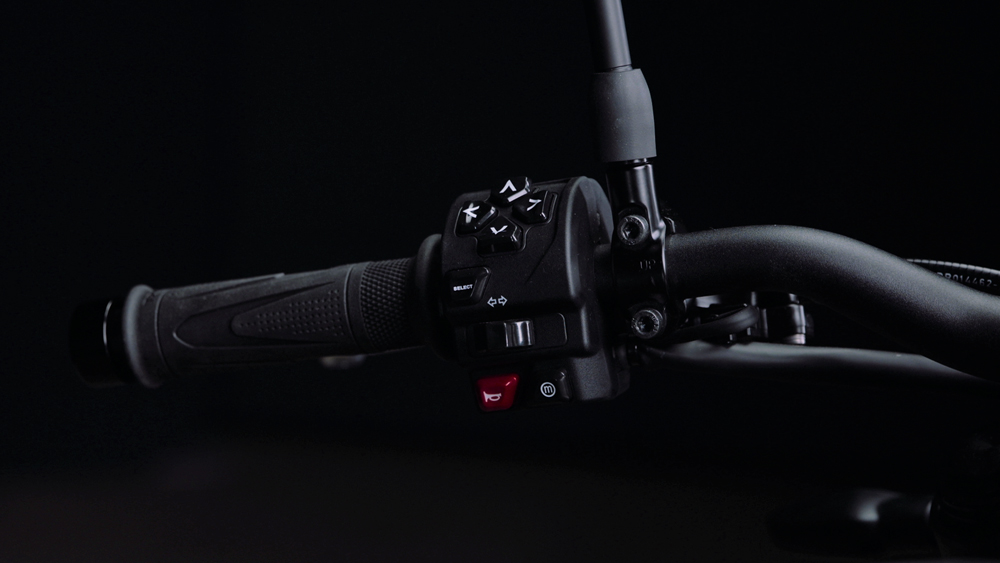
Stylistically, the Trident pulls some DNA from Triumph’s other roadsters, but in a far more subdued package. The knee indents and round 7” headlight riff off Triumph’s modern classics, while the tail unit has shades of the older Street and Speed triple in it. We’re not sure which colours will make it to South Africa, but the full catalogue includes silver and red, black and silver, white, and black options.
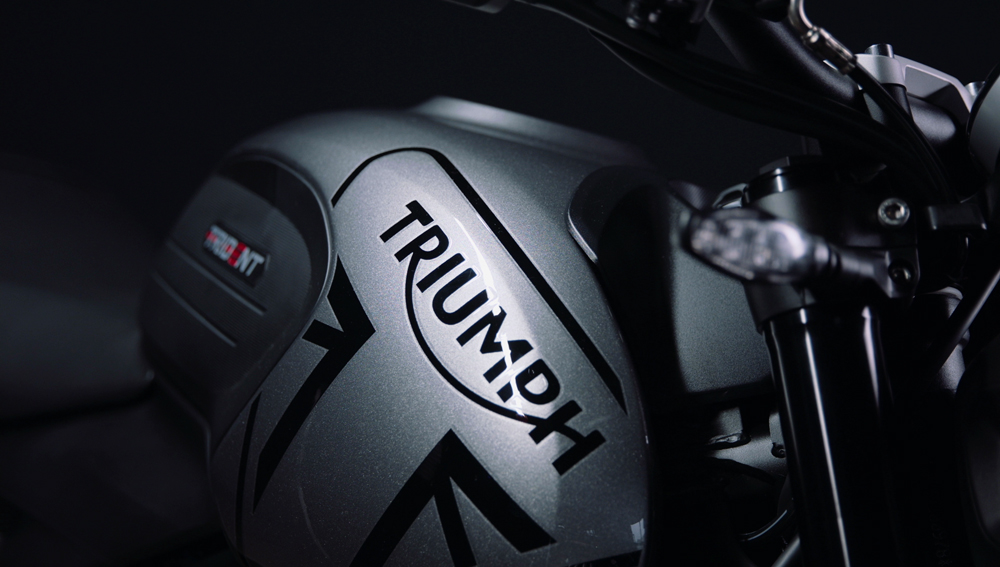
The overall design might be a bit vanilla for some, but it’s a neat package that should offer a more neutral alternative to the aggressive styling of bikes like the Yamaha MT-07 and Kawasaki Z650. It has some nice details too—like the swingarm-mounted plate bracket that leaves the tail looking clean, and the removable passenger pegs.

Triumph naturally have a healthy catalogue of aftermarket parts ready to go too. It includes everything from a fly screen and bar-end mirrors, to luggage, passenger grab handles and various protective parts.

Where the Trident really punches hard, is value. Triumph South Africa are expecting it to land in February with prices starting at around R150,000. That’s a little more than the MT-07 and Z650, but it’s a lot less than the Street Triple 765. It also has 16,000 km service intervals—so it’s really good value if you’re looking for a Triumph triple, but can’t quite afford to go all-in.




